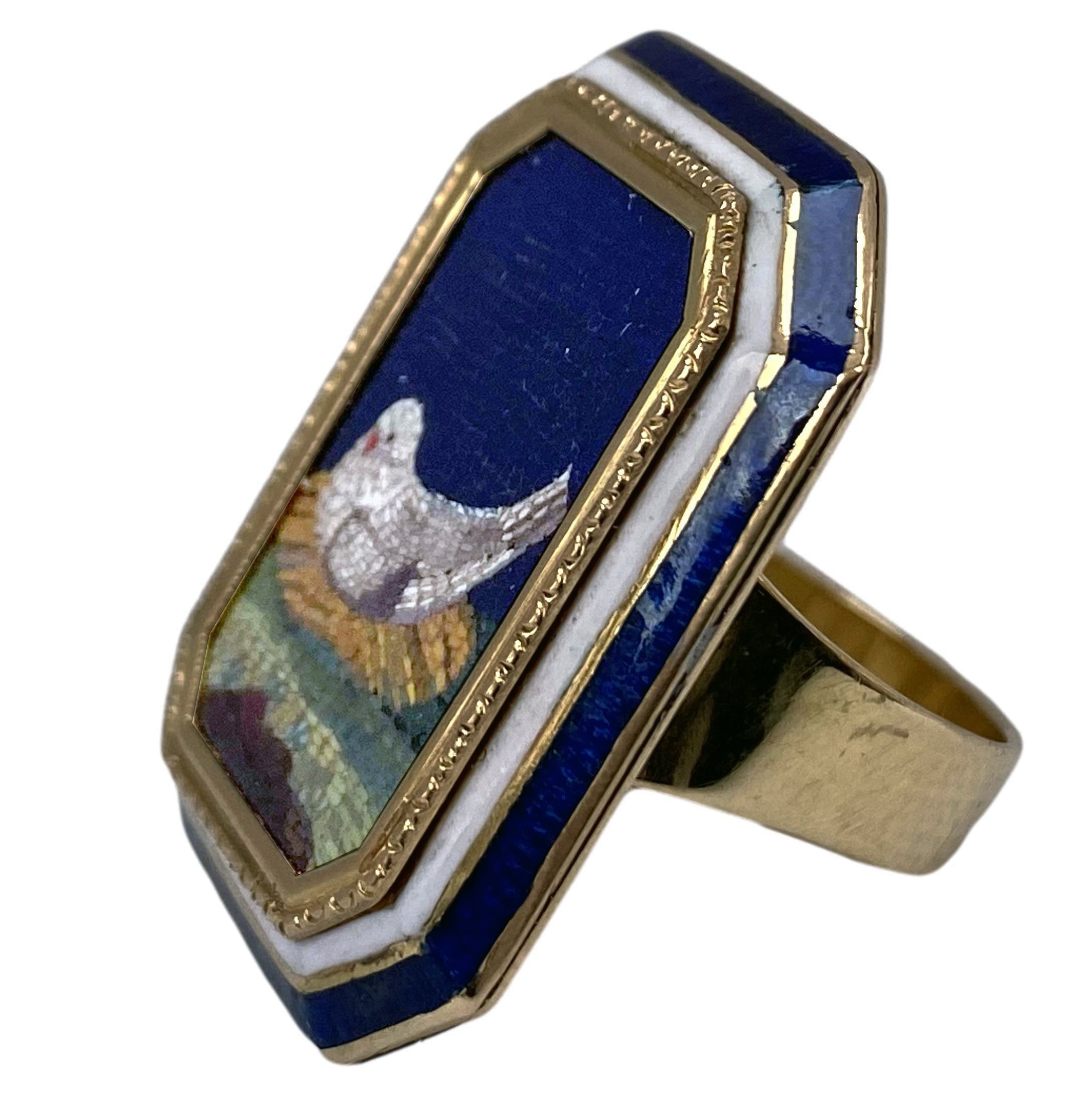







Egyptian revival micromosaic pendant
Immerse yourself in the exquisite craftsmanship of this museum-quality 18ct gold pendant-brooch, a splendid embodiment of the Egyptian revival or retour d'Égypte style. Adorned with stylized wings and falcon heads, this remarkable piece features a captivating central micromosaic, skillfully depicting intricate hieroglyphs against a striking white background.
Housed in its original fitted case, the brooch carries a distinguished history, with the date of March 24, 1875 elegantly engraved on the back. This piece showcases Roman manufacture reminiscent of the renowned Castellani style, potentially attributable to the esteemed firms of Cesare and Enrico Tombini, active between 1857 and 1890, or Giuseppe Civilotti, noted for his work during the same period.
Further enhancing its allure, the brooch bears illegible hallmarks on the pin, suggesting its authenticity and connection to a legacy of extraordinary artisanship. With dimensions of 8.5 x 3.5 cm, this jewel is presented in pristine condition, truly reflective of its age and previous use, making it an exquisite addition to any sophisticated collection of fine art and antiques.
Egyptian revival micromosaic pendant
Immerse yourself in the exquisite craftsmanship of this museum-quality 18ct gold pendant-brooch, a splendid embodiment of the Egyptian revival or retour d'Égypte style. Adorned with stylized wings and falcon heads, this remarkable piece features a captivating central micromosaic, skillfully depicting intricate hieroglyphs against a striking white background.
Housed in its original fitted case, the brooch carries a distinguished history, with the date of March 24, 1875 elegantly engraved on the back. This piece showcases Roman manufacture reminiscent of the renowned Castellani style, potentially attributable to the esteemed firms of Cesare and Enrico Tombini, active between 1857 and 1890, or Giuseppe Civilotti, noted for his work during the same period.
Further enhancing its allure, the brooch bears illegible hallmarks on the pin, suggesting its authenticity and connection to a legacy of extraordinary artisanship. With dimensions of 8.5 x 3.5 cm, this jewel is presented in pristine condition, truly reflective of its age and previous use, making it an exquisite addition to any sophisticated collection of fine art and antiques.
The Tombini (Cesare and Enrico) were known for their 'archaeological style' jewelry; the company's pieces could be purchased at the Rome store, as well as through their Wigmore Street dealer in London. Such revivalist-style jewelry was popularized by Napoleon III's wife, who wore jewelry from the "Campana" collection, which included many antique pieces. The most influential jeweler of that period was Fortunato Pio Castellani and his sons Alessandro and Augusto, who strove to recreate historically accurate models of the recently excavated finds. They exhibited their work at international exhibitions and had shops in London and Paris. The style gained momentum with Carlo Giuliano & John Brogden in London, Henri Vever & Eugene Fonteney in Paris and Josef Bacher & Sohn in Vienna. No tourist trip to Rome would have been complete without a visit to a jeweler working in this new "classic" style. George Eliot and George Henry Lewes, when they visited the city, chose Manholes to mount a cameo of a bacchant they had purchased. In his diary of April 18, 1860, Lewes wrote: "We took the bacchant to a goldsmith and there she chose an Etruscan setting" (see Yale University Library GEN MSS 818 for the cameo in its gold Tombini setting). "A Handbook of Rome and its Environs" (John Murray, London, 1871) notes that Cesare Tombini was 'a good jeweler in via del Babuino 65, on whom one can rely on to set cameos, mosaics, etc.' There was a growing interest in the Egyptian style around 1860, thanks to Auguste Mariette's excavations for the Louvre and the construction of the Suez Canal. Verdi's Aida (1871) was based on a plot by Mariette, following Khedive's request for an opera story.
The Civilotti family (Antonio, Giuseppe and Carlo) were well known in Rome as jewelers from the mid to late 19th century. Antonio Civilotti, a talented goldsmith is known for his Etruscan and Neo-Renaissance style jewels in the manner of Castellani. Giuseppe Civilotti, stone engraver, opens a jewelry shop in Piazza di Spagna where he sells the jewels made by Antonio. His shop has been mentioned in many Rome guides since the 1850s. At that time Rome was a must for Grand Tour travelers and micromosaic jewelry was a luxurious and refined souvenir that was very trendy.







